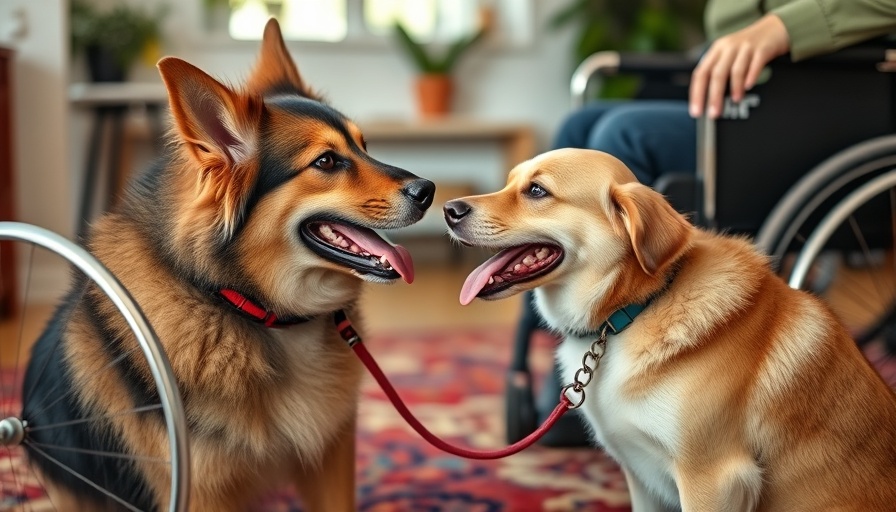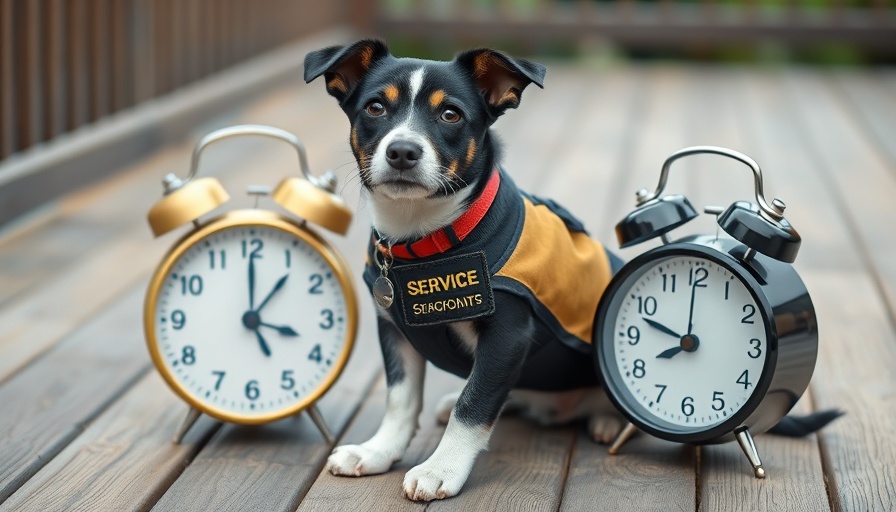
Understanding the Essential Pulling Skills for Service Dogs
Service dogs are trained to perform a variety of tasks that assist their handlers, and one such skill is pulling. Pulling can range from opening doors to assisting with tasks like removing clothing or zipping up jackets. This seemingly straightforward behavior requires precision and control to ensure both efficacy and safety. The techniques for teaching service dogs to pull must prioritize the safety of the handler while also ensuring the dog responds appropriately in various situations.
The Two Approaches to Training Pulling
Training a service dog to pull can be accomplished through two distinct strategies: utilizing play and employing a structured "Back Up" cue system. Both methods have their own advantages and challenges, which can be adapted based on the specific dog and task requirements.
Using Play to Teach Pull: Fun with Purpose
The first method incorporates play into the training process. Using a tug toy, trainers can evoke the pulling behavior during a game. As the dog engages with the toy, the trainer can reward the dog each time it exhibits the desired tugging. This technique not only makes the training enjoyable for the dog but also capitalizes on the natural instincts canines have for play. However, it comes with its own set of drawbacks.
One challenge of this approach is maintaining control over the pulling direction. For example, if a service dog is required to pull a door open, it is crucial that the dog can pull from the correct angle. Additionally, excitement can lead to undesirable behaviors, such as chewing or shaking of the tether. These behaviors can pose safety risks if not adequately managed during the training process. The balance between encouraging enthusiasm and controlling behavior can be tricky to navigate.
The “Back Up” Cue: Structured and Precise
In contrast, the second strategy of using the "Back Up" cue offers a more controlled approach. This method relies on previously taught backing up behaviors, combined with the established take-and-hold commands. Starting by using a platform for the dog to back onto, trainers can mark the pulling when the dog successfully moves into the required position.
The advantage of this technique is the built-in control it offers. Trainers can guide the pulling direction and ensure the dog maintains the correct tension on the tether without excessive force. As the dog learns, the platform can be moved to teach pulling in different contexts, ensuring the service dog can adapt to various tasks as needed.
The Importance of Reliability and Safety
Regardless of the approach chosen, the fundamental requirement is that the dog establishes a reliable take-and-hold behavior prior to training pulls. This foundational skill provides a basis for building the more complex pulling tasks needed for service work. Consequently, successful training hinges on the dog's ability to execute these basic commands fluently before moving into more advanced pulling techniques.
Common Misconceptions: It’s Not Just About Tugging
A frequent misconception about training service dogs to pull is that any tugging will suffice. However, pulling requires a balance of strength and safety. If a dog pulls too hard, it could jeopardize the handler's safety, while too soft a pull may not accomplish the task at hand. Trainers must focus on teaching the dog to pull with the right amount of tension and to cease pulling at the appropriate time, such as when the door is fully open or an article of clothing is unfastened.
Embedding Control in Play: The Best of Both Worlds
Another often-overlooked aspect is the material of the tether used during training. Choosing the right tether can significantly affect a dog’s response to pulling exercises. For instance, a rigid material may be better for dogs known to become overly excited during play, whereas a softer material may encourage enthusiasm in calmer dogs. Finding the right gear can thereby streamline the learning process.
Conclusion: Crafting Effective Service Dog Training
The ultimate goal of training service dogs to pull is to ensure that the behavior is not only effective but also safe. By focusing on precision, control, and the proper handling of excitement, trainers can successfully impart these vital skills to service dogs. Understanding each dog’s unique temperament and adjusting training strategies accordingly will lead to the most competent service animals.
If you are a dog owner or professional interested in enhancing your training methods, consider incorporating these insights into your approach. The ability to effectively train a service dog to pull can enhance both the handler's life and the dog’s effectiveness in their service role.
 Add Row
Add Row  Add
Add 




 Add Row
Add Row  Add
Add 

Write A Comment